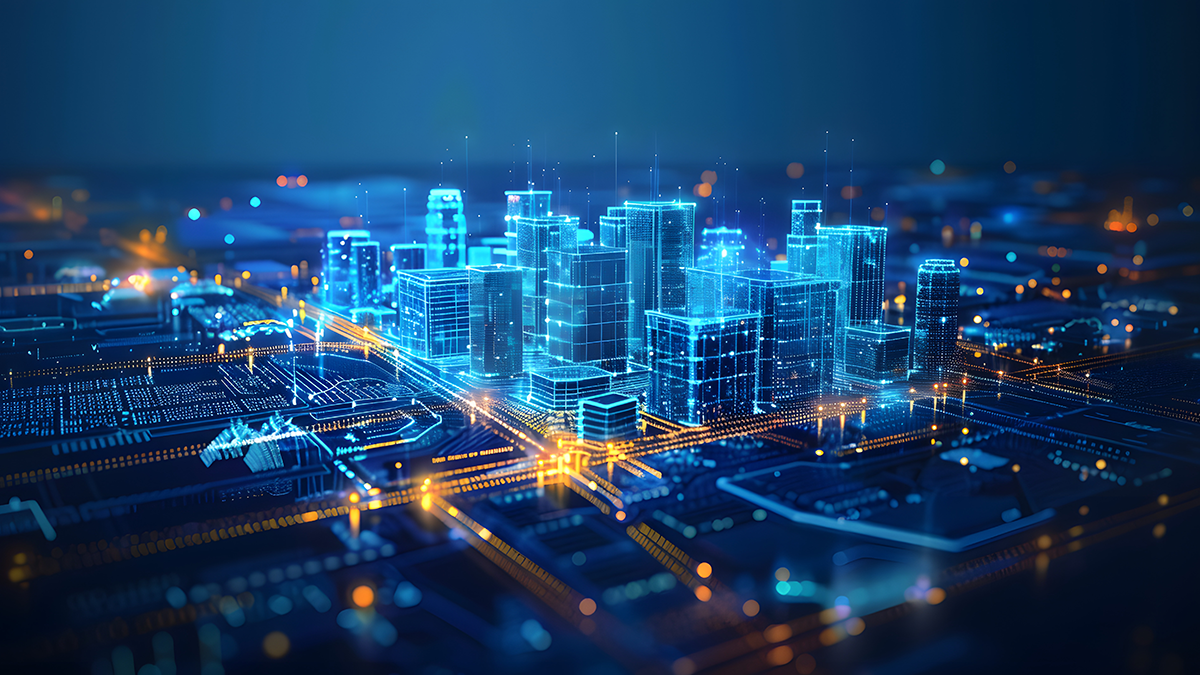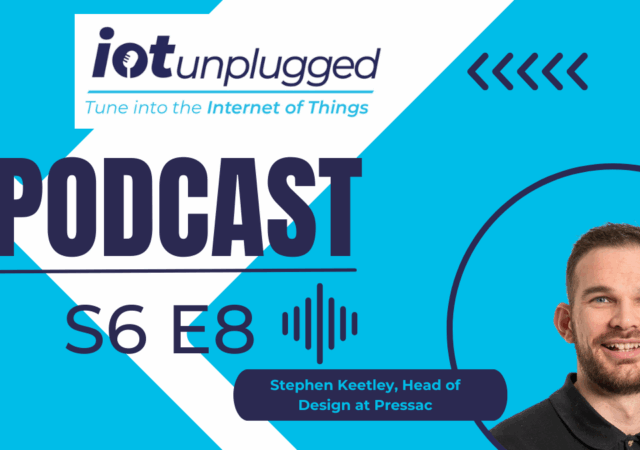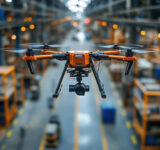Sujata Neidig, Director of Marketing for Wireless Connectivity in IoT, NXP, shares how Matter, sensors, and EVs are contributing to smarter buildings
Commercial buildings consume a significant amount of energy, with offices and warehouses accounting for up to 8% of global energy consumption and up to 10% of emissions. Dig into the details, and it gets worse. According to the IEA, the operations of buildings account for 30% of global final energy consumption and 26% of global energy-related emissions, with direct and indirect emissions including the production of electricity and heat used in those buildings.
The good news is that advances in smart building technology are unlocking new ways to reduce this carbon footprint by connecting different systems in buildings and applying AI-driven intelligence.
Interoperable IoT platforms, such as Connectivity Standards Alliance’s Matter, can make a huge difference to energy consumption. Matter makes it possible to coordinate lighting, HVAC, appliances, and even electric vehicle charging, to cut energy waste dramatically while keeping occupants comfortable.
Breaking down silos with smart connectivity
Traditionally, a lack of communication between different smart systems has been a big barrier to smarter energy management in buildings. An office might have separate, proprietary controls for climate, lighting, and security, for example, which don’t share data. This siloed approach makes it hard to optimise energy use across the whole building.
Matter aims to fix that by letting diverse devices talk to each other out of the box. With a unified language for devices, a motion sensor from one vendor can trigger another brand’s lights to turn off, or an HVAC thermostat can coordinate with window shades, with no custom integration required.
Because these devices communicate over a local network, responses are fast and don’t depend on Cloud connectivity. This local connectivity means the building can make decisions in real time, preserving comfort while saving energy. In short, interoperability breaks down technology silos so that an entire building can act as one coordinated system instead of disparate parts.
Ambient sensing and automated control
Smart buildings use a network of sensors as their eyes and ears. Ambient sensing devices, such as occupancy detectors, thermostats and humidity sensors, light sensors, and air quality monitors, continuously measure conditions throughout the facility.
The building’s management system can use this data to adjust conditions on the fly. If a meeting room or section of the office is unoccupied, for example, the system can dim or switch off lights and dial back the air conditioning in that area. With advanced sensors that use UWB (ultra-wideband) technology, for example, it’s now possible to count the number of people in a room without encroaching on privacy. When people return, lights and HVAC systems can ramp up to comfortable levels without any manual intervention.
This responsive automation avoids the inefficiencies of fixed schedules or human forgetfulness. Instead of lights blazing in empty rooms overnight or HVAC running full blast all day, every day, the building only uses what’s needed at any given moment.
Daylight sensors can lower the electric lighting when plenty of sun is coming through the windows, and smart thermostats can pre-cool or pre-heat spaces based on occupancy patterns. These adjustments happen behind the scenes, maintaining a comfortable environment and cutting waste.
Real-time energy monitoring
‘You can’t manage what you don’t measure’ applies strongly to building energy use. Modern IoT-enabled equipment provides real-time energy reporting, giving facility managers (or automated algorithms) a live view of how much power each device or system is using.
In a smart commercial building, everything from the HVAC systems to the coffee makers can report power consumption. This granular visibility is a game-changer. It reveals energy hogs and patterns of waste that would otherwise stay hidden – for example, an ageing motor drawing abnormal power, or lights being left on every weekend.
Live energy data also enables quick decisions. If the building’s total load spikes suddenly, the system can pinpoint the cause and take corrective action (for instance, temporarily reducing HVAC output by a few percent or delaying a non-critical process).
Because devices report energy in a unified format, a central energy management system can easily aggregate data and analyse the whole building’s power profile in real time. These insights let operators optimise scheduling – running power-hungry equipment at off-peak times, for instance – and verify the impact of efficiency improvements.
Coordinating devices for efficiency
The true power of a smart building emerges when devices work together – an energy-aware collaboration across all the building’s loads. When everything from HVAC dampers to server racks is connected, the system can dynamically balance energy use. For example, it might give priority to critical equipment while temporarily dialling down less crucial systems.
If the utility signals a demand-response event or high pricing period, the building can automatically dim non-essential lights, tweak thermostats by a degree, or pause charging of electric vehicles until the peak passes. Afterwards, it returns things to normal and perhaps kicks off any postponed tasks when electricity is cheaper or cleaner.
This kind of coordination minimises waste and flattens out peak demand. Advanced IoT standards even support commands that tell devices to adjust their energy draw on the fly. In effect, each device can trim its usage when asked. By managing dozens of small actions, the system can significantly reduce overall consumption and shave peak loads, in turn cutting emissions.
Integrating EV charging and V2G
With electric vehicles becoming increasingly mainstream, many offices and warehouses are installing EV charging stations for employees and fleets. Incorporating those chargers into the building’s smart energy system is crucial to avoid huge new power spikes. An intelligent building can stagger and schedule EV charging to times that minimise strain and cost.
Rather than every car charging at 5pm, for example, the system could potentially slow or pause some charging during the late-afternoon peak, then resume charging in the evening when demand drops. EV owners can set a target charge level by a certain time and let the system decide when to draw power, taking advantage of the cheapest, cleanest energy window.
Looking ahead, those same EVs could even become energy suppliers for the building. Bi-directional charging (vehicle-to-grid, or V2G) technology allows car batteries to discharge power back into the facility or grid when needed.
Transformation of buildings from passive energy consumers to active participants
Buildings equipped with battery storage can store excess energy generated onsite or drawn at low-demand periods and use or feed it back during peak times, supporting grid stability.
Active buildings can respond to grid signals by adjusting energy consumption dynamically, reducing load during peak demand, or even deliver energy back to the grid (vehicle-to-grid, building-to-grid concepts).
This scenario is still emerging, but standards are already laying the groundwork. With a unified platform managing HVAC, batteries, solar, and EV chargers together, it’s possible to smoothly coordinate two-way energy flows. In the future, an office parking lot might double as a giant battery bank that helps to stabilise the grid, earning energy cost savings while lowering overall emissions.
A truly intelligent low-carbon building
The rise of increasingly smart and connected technology proves that sustainability and occupant comfort can go hand in hand.
By combining sensors, smart controls, and interoperability, commercial buildings are becoming proactive about energy use – adjusting in real time to avoid waste. Every kilowatt-hour saved through smarter lighting or efficient cooling translates to less fuel burned at power plants. Multiply those savings across thousands of offices and warehouses worldwide, and the carbon reduction impact is tremendous.
Importantly, it’s a win-win, as building owners and tenants save on utility bills, occupants enjoy well-regulated environments, and everyone benefits from a cleaner electric grid with less strain. As more devices connect through common IoT standards like Matter, smart buildings will only become more capable and efficient.
With advances in connected AI technologies at the Edge and growing sustainability needs, buildings are evolving from traditional passive energy consumers to active participants in energy management and generation. By communicating with smart grids, buildings contribute to a decentralised and resilient energy ecosystem, enhancing overall energy efficiency and reducing our carbon footprint.

Sujata Neidig has over 30 years of experience in the semiconductor industry and has served in a variety of roles ranging from product engineering to marketing and business development. She is currently Director of Marketing for Wireless Connectivity in IoT. She also leads NXP’s standards efforts for IoT connectivity and represents NXP on the Thread Group and Connectivity Standards Alliance’s Board of Directors as well as serving as Thread Group’s VP of Marketing. She has a degree in electrical engineering from the University of Texas at Austin.
There’s plenty of other editorial on our sister site, Electronic Specifier! Or you can always join in the conversation by visiting our LinkedIn page.










